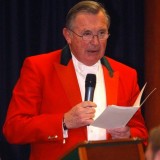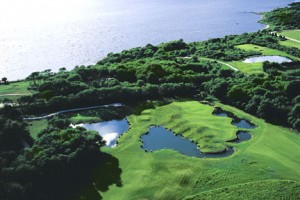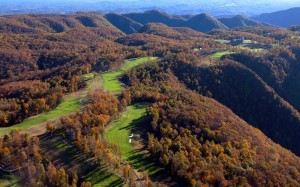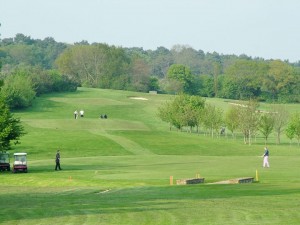 Born in Hillingdon, Middlesex, England in 1937; Donald Steel was educated at Fettes College, Edinburgh, and Christ’s
Born in Hillingdon, Middlesex, England in 1937; Donald Steel was educated at Fettes College, Edinburgh, and Christ’s College, Cambridge. He played first game of golf at Denham at the age of six or seven during the first year of John Sheridan’s 52 year reign as Club professional, qualifying for the Open championship at St Andrews in 1970 was the undoubted peak of achievement. This was in the same year in which he represented England in the Home Internationals at Royal Porthcawl and scored his second victory in the President’s Putter at Rye. In his favorite competition, he was only the second player to take part in 100 matches.
College, Cambridge. He played first game of golf at Denham at the age of six or seven during the first year of John Sheridan’s 52 year reign as Club professional, qualifying for the Open championship at St Andrews in 1970 was the undoubted peak of achievement. This was in the same year in which he represented England in the Home Internationals at Royal Porthcawl and scored his second victory in the President’s Putter at Rye. In his favorite competition, he was only the second player to take part in 100 matches.
Donald Steel’s working life began with his appointment- hotfoot from Cambridge- as golf correspondent for the Sunday Telegraph in London, a brand new newspaper launched on February 6th 1961. This made him the youngest specialist writer in Fleet Street at the age of 23.

In his chosen careers of golf writing and golf course architecture, a balance of interest has given the best of both worlds. Still does. If watching champions and studying new land passes as work, the playing side of a varied life shows (or, at least, did) that he can practice what he preaches. His impressive portfolio includes dozens of excellent golf courses all around the world, in 2003, Donald Steel was named as the 4th most influential golf course architect in the world by Golf Magazine.

Arnold Palmer added spice to his indoctrination by winning the first two Open championships that Steel covered. Altogether Steel reported 32 Opens in succession. After leaving the Telegraph at the end of 1989, he continued to write for Country Life having, in 1983, become only the magazine’s fourth regular writer on golf. He followed the distinguished line of Horace Hutchinson, Bernard Darwin and Pat Ward-Thomas.
Books of which Steel was author, co-author, editor or co-editor include.
The Classic Links of Great Britain and Ireland (the only book devoted solely to Links).
Volume III of the R&A History Traditions and Change (with Peter Lewis).
2 Golfers Bedside Books.
13 Editions of the Telegraph’s Golf Course Guide which he instigated.
Three books for Guinness on Facts and Feats.
Shell’s World Encyclopedia of Golf (with Peter Ryde and Herbert Warren Wind). This was described as one of the best three golfing reference books ever compiled.
Related posts
Golf Architects/Designers: Von Hagge, Smelek & Baril (Robert von Hagge)
on Monday 25, JulyRobert von Hagge was literally born and raised on a golf course. For six...
Golf Architects/Designers: Bobby Weed
on Monday 22, AugustBobby Weed was born in April 13, 1955 in Irmo, South Carolina, USA. His...
Golf Architects/Designers: Ronald Fream
on Monday 23, AugustIn the midst of a master’s degree program in turfgrass management at Washington State...
